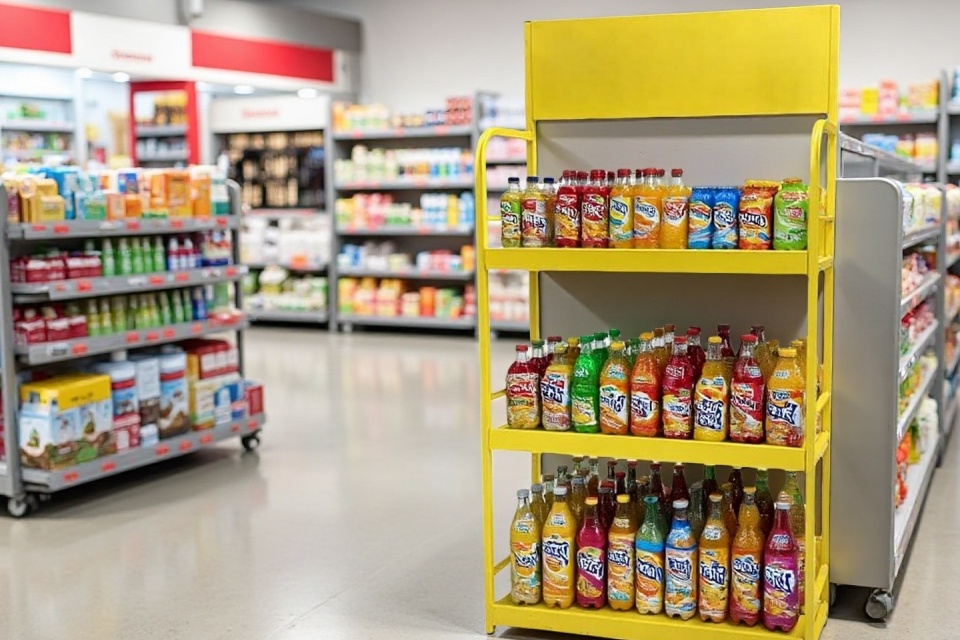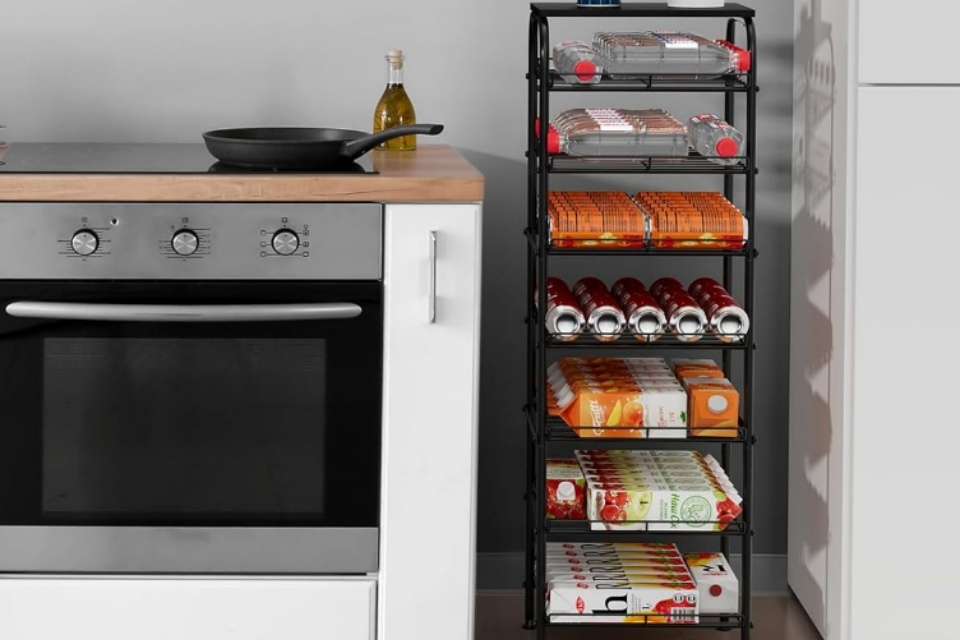



Quick-mount SMT feeders speed changeovers, cut errors, and support offline kitting. Pair with QIAO wire shelving to stage parts clean and keep your flow steady.
You want faster changeovers, fewer mistakes, and calmer nights. Quick-mount (quick-change) SMT feeders do that. In high-mix lines, they turn stop-and-go shifts into smooth runs. In big volume lines, they cut tiny delays that pile up all day. Let’s walk through the real benefits, the trade-offs, and where to look before you buy.
Changeover is dead time. The machine isn’t placing parts, so no value happens. Quick-mount feeders reduce the steps: you click in, the locator pins seat, the sensor reads the ID, and you go. No tools, no long screws, no fiddly shims.
In practice, that means:
Typical scene: you finish Product A, and Product B is already staged on a cart. You pull, swap, push. That’s it. Less waiting, more building.
Quick-mount systems often bundle feeder ID or barcode tags. The line computer checks: right part, right nozzle group, right slot. If something is off, the system shouts early, not after reflow. This is gold for automotive, medical, and any customer who asks for lot-to-board traceability.
You also get cleaner MSD (moisture sensitive device) handling because the system knows when the reel opened and where it’s loaded now. Small detail, big quality win.
Let the machine run while you prepare the next job on a setup bench. Label, verify, close the loop in the database, then roll the kitted feeders over. The feeder design makes that hand-off quick: snap-in, lock, confirm.
This is where good material flow meets good hardware. If your staging is a mess, quick-mount hardware can’t save the day alone.
Tip: pair your offline setup with tidy storage. Sturdy wire racks help a lot. For example, we use wire carts and bin levels to keep reels, trays, and backup feeders neat and first-in-first-out. See our Commercial Display Cabinet Components and Beverage Cabinet Wire Rack pages—yes, they look retail, but the geometry and finishes are perfect for ESD totes, reel rails, and kanban labels. For heavier kits, consider walk-in refrigerated wire shelving for stable, easy-roll staging.

If you change programs a lot, every unnecessary minute hurts OEE. Quick-mount designs keep takt steady when products flip all the time. They also scale to more 8 mm lanes in the same footprint, so you cover bigger BOMs without juggling feeders between machines.
Line slang you’ll hear: SMED, water-spider, golden sample, travel path, backflushing, part family, kit integrity. All of it points to one idea: keep operators close to value-add work, not stuck re-threading tape.
Lightweight feeder bodies and push-to-lock latches reduce wrist strain. Shorter tape leaders and smarter peelers cut the “hand in the machine” time. Less fatigue → fewer errors. Your EH&S team will smile, even if just a little bit.
| Factor | Quick-Mount Feeders | Older/Conventional Feeders | Why it matters |
|---|---|---|---|
| Changeover steps | Few, tool-less, guided | Many, tool-based | Fewer steps = less idle time |
| Feeder identification | Built-in ID/barcode, auto-check | Manual labels, memory | Stops wrong-part disasters early |
| Offline kitting | Designed for carts/benches | Clunky to pre-stage | Machine keeps running while you prep |
| Refill during run | Easier back-loading and splice | Often stop-to-refill | Keeps net uptime higher |
| Lane density (8 mm) | High, compact pitch | Lower, bulkier frames | More parts per footprint |
| Training curve | Short, intuitive | Longer, tribal tricks | New hires become productive faster |
| Ergonomics | Light, quick latch | Heavy, screws/clamps | Less fatigue, safer hands |
| Traceability | Standard with MES hooks | Add-on or manual | Audit-ready history |

Quick-mount feeders shine when the surrounding flow is clean:
That’s where QIAO comes in. Our team builds custom wire shelving and carts that match SMT reality: narrow aisles, ESD bins, mixed reel diameters, and weight that won’t bend shelves. We powder-coat or chrome depending on the zone, and we add dividers so 8 mm reels don’t drift.
Explore related hardware here:
We don’t just ship a rack. We adapt the shelf spacing so your feeder carts and ESD totes park right under the printer outfeed—shorter travel path, less chaos.
1) Changeover reality
How many product switches per shift? If it’s more than “just a few”, quick-mount pays back in sanity, not only in throughput.
2) Feeder ID and MES
Make sure the feeder speaks your software. Can it track lot codes, moisture clocks, and slot positions? Does the machine block a mismatch?
3) Splicing and refill
Look for easy splicing windows and safe back-loading. You want refill without stopping the line whenever possible.
4) Lane density and odd parts
Count 8 mm lanes you really need, then add a buffer. Also check odd-form support (tubes, trays) so you don’t end up with a second feeder family.
5) Ergonomics and training
Ask operators to try it. If they need a long guide or three hands, that’s a no. The right feeder should feel “click, done”.
6) Spare policy and service
Feeder bodies are your workhorses. Confirm parts availability, wear items, and calibration flow.
7) Storage and staging
If you can’t stage cleanly, you won’t realize the speed. Bring in sturdy shelving, carts, and labels. (Ping QIAO and we’ll map a quick flow with wire layouts—no fuss.)

You run HMLV. Programs change a lot. With conventional feeders, operators stop, unscrew, re-thread, check. Tension gets weird. Someone forgets to scan a lot code. Later, QA finds an issue. Oops.
With quick-mount, you kit the next job offline. At the change, the crew swaps banks, scans, verifies, and restarts. The printer never cools down. The vibe is calm. You didn’t need to be a genius, you just made the steps simpler.
Yes. Quick-mount systems can feel pricier up front. Some models are platform-specific, so you lock into one brand family. Also, high lane density can make access tight if the machine door openings are small—measure twice. But if your job mix is busy or customers require strong traceability, the benefits land every single day.
Shelving is part of the line, not a side thought. With the right wire build:
And if you operate in chilled zones or back rooms, corrosion-resistant finishes help a lot. Our ODM/OEM shop designs those details with you—rail spacing, stops, handles, color caps for value-stream IDs, all the small bits that make a day easier.
Quick-mount feeders don’t magically make the machine faster; they make everything around the machine smoother. Less idle time. Fewer mix-ups. Happier operators. When you pair them with clean offline kitting and the right wire carts and shelves from QIAO, the whole flow clicks.
If you want, send your feeder model list and a rough floor plan. We’ll sketch wire cart layouts and shelf loads that fit your Custom Wire Shelving Manufacturing Services goals—without over-engineering it. You’ll get a tidy, plug-and-run setup that feels good on day one.